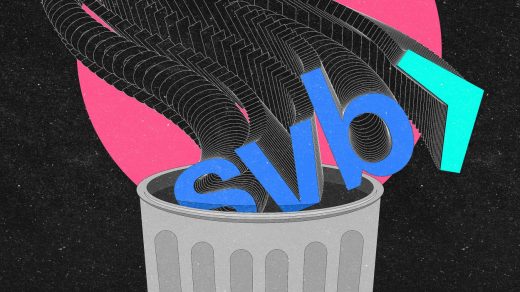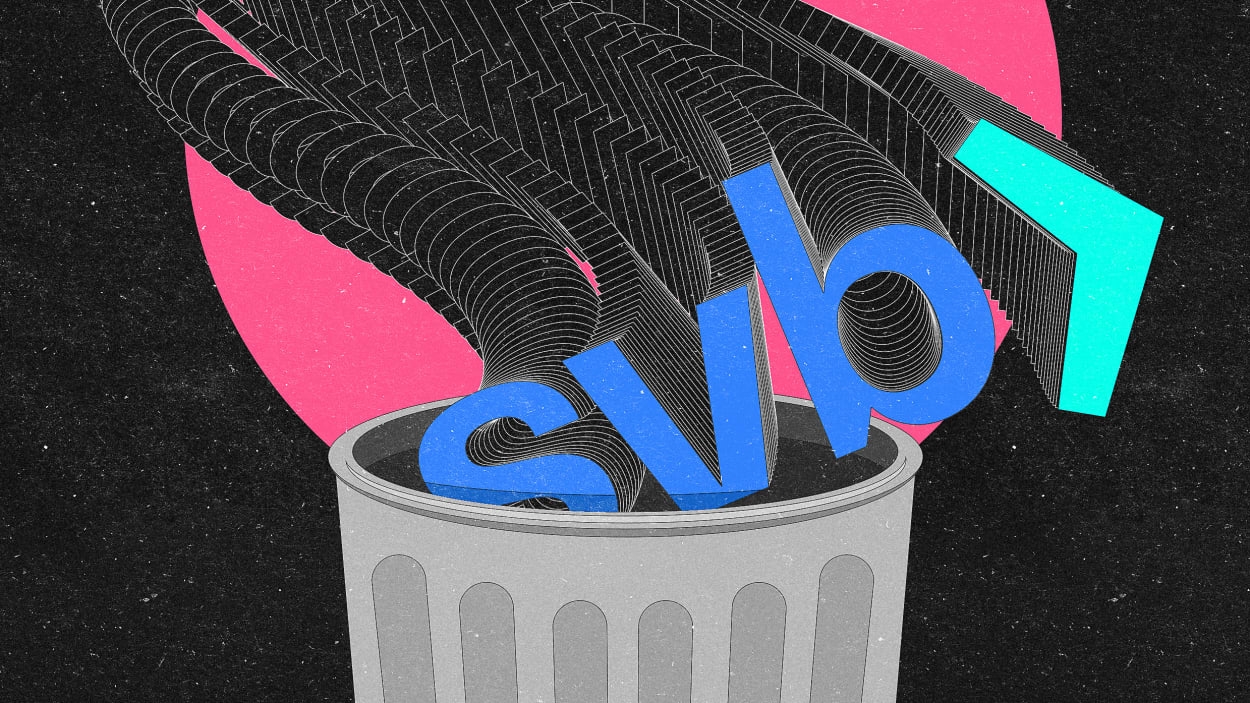SVB built its brand on community. Then the community dumped it like a ton of bricks
Branded is a weekly column devoted to the intersection of marketing, business, design, and culture.
By the time it unraveled at blinding speed late last week, Silicon Valley Bank had been telling a consistent and convincing story about itself for decades. It had branded itself as a kind of community bank for a rarefied community: “We partner with the most innovative founders, executives, and investors to help them adapt to and navigate the ever-changing innovation economy,” its site (still) says. This brand messaging was highly effective, building a formidable client base and a banking business that ultimately had aspirations well beyond Silicon Valley.
Unfortunately for SVB, when its CEO asked clients to “”stay calm and to support us like we’ve supported you during the challenging times,” the bank discovered the brand loyalty of that client base had some very hard limits. “As much love and desire as we have for SVB, fear came first,” one 20-year client who responded to hints of trouble last week by immediately pulling all his company’s funds from the bank told the New York Times. That fear, of course, sparked the run on SVB that swiftly destroyed it.
SVB’s roots are authentically intertwined with Silicon Valley innovation culture. It started in 1983 as a fledgling community bank specifically aiming to serve small and growing tech companies. This filled a genuine need: Many traditional banks believed the founders of young and unproven tech companies were too risky as customers. The founders of SVB, working their connections, rounded up scores of investors and influencers whose backing helped them found a community bank for innovators in Silicon Valley. Back then, the words “Silicon Valley” had little cultural relevance, but over time became not just familiar but aspirational, and the bank’s client base extended well beyond that geography.
SVB leaned into that connected identity. A 2004 marketing campaign, for example, turned on the slogan “We Know People,” a clever mixture of the personal touch and insider cachet. Its approach seemed to pay off: By 2019, an astonishing 69% of all U.S. venture capital-backed companies that went public were SVB clients, notes one study.
To be clear, SVB’s actual model wasn’t really radical. While it pioneered venture debt loans, for the most part it essentially offered the same function as any bank—a safe place to keep money—but with the higher-touch service of a community financial institution: helping its entrepreneur-customer base get mortgages, and so on. SVB seems to have benefited from the kind of upbeat word of mouth that all brands crave, a no-brainer recommendation from venture capitalists to founders and vice versa.
After all, what was the “innovation economy” if not a like-minded community of sorts? Was it so different from the fictional community that endured the most famous bank run of all time—the one on Bailey Bros. Building & Loan in the Bedford Falls of Frank Capra’s It’s A Wonderful Life. The scene has been cited a lot lately, but it’s worth pointing out that George Bailey’s bank was actually in a much more unambiguously precarious situation than SVB was, and good old George saved the day in part by insistently playing the community card, jawboning enough of his fellow citizens to withdraw only what they needed so the bank might recover to everyone’s benefit.
Alas, that was just a movie. In real life, fear trumped trust and SVB’s community disintegrated. We may never know if SVB’s maneuvers to shore up its capital situation—admittedly, a real problem brought on by bad risk management and poor communication—might have worked. But we now know for sure that one thing even more unnerving than a traditional bank run is one fueled by social media.
The Silicon Valley herd instincts, which helped build SVB, now worked in the opposite direction. (Some of the VCs and founders who loudly participated in the viral stampede to the exits have since deleted their flame-fanning tweets.) The upshot was the equivalent of Uncle Sam barging into George Bailey’s plea to his customers and taking charge—and the “community” breathing a sigh of relief and good riddance to his ouster.
There was always a bit of tension in SVB’s cultivated image. On the one hand, as a “midsize” bank, it argued for looser regulation than the biggest institutions faced. On the other hand, it relentlessly positioned itself as a key linchpin to the business of innovation and all that that implied, even as its lack of diversification contributed to its undoing.
Ironically, that distinct reputation may have benefited its customers right to the end: Uncle Sam’s assurances went well beyond the established promises of federal banking insurance, promising to make every depositor whole, to head off any broader contagion. It’s not certain what the “systemic” fallout would have been if SVB depositors had not been rescued at levels far beyond anything federal banking insurance was envisioned to cover—setting a precedent regulators may come to regret—but who wants to be responsible for letting the community bank of the “innovation economy” unwind in gory detail?
The new CEO of what’s now called Silicon Valley Bridge Bank is still trying to find a buyer for the former SVB, in whole or in pieces, and is meanwhile appealing to the bank’s erstwhile community to keep their newly recovered deposits in the bank—or to put them back in. “We are doing everything we can to rebuild, win back your confidence, and continue supporting the innovation economy,” wrote CEO Tim Mayopoulos. Some VCs are endorsing that course, but even they advocate moving a large portion of funds elsewhere. The idea that SVB was vital to the tech-business ecosystem may have been powerful enough to save the bank’s clients. But it wasn’t enough to save the bank itself.
(27)



